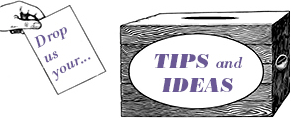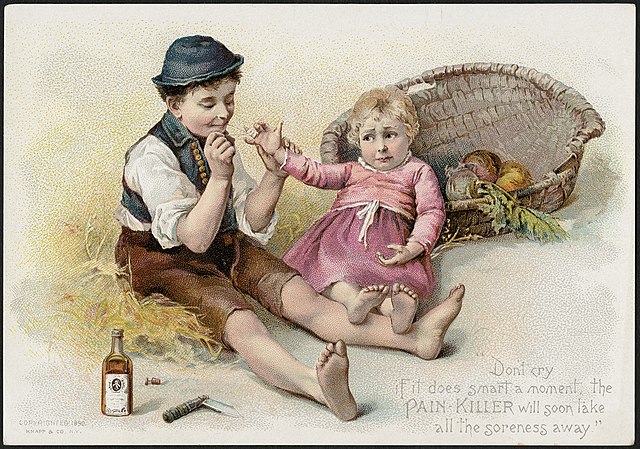
By Carol Zeavin and Rhona Silverbush
Hello, again! We’re back — Carol Zeavin and Rhona Silverbush, co-authors of the Terrific Toddlers series of picture books for toddlers — to help demystify the minds and hearts of the children, grandchildren, (great-)nieces and nephews, and others in your life, and help you strengthen your bonds with them.
Before we get to today’s topic, here are some overarching useful concepts to understand about your toddler:
-
Whether the toddler in your life is 15 months old or turning three, they were just recently a baby. They still have one foot in babyhood and the other in childhood and they’re straddling the two, masterfully, we might add. But this means that they have not yet been on this earth long enough to understand so many of the basics. They’re learning at the most rapid rate humans will ever learn at — it’s impressive! But they are hypothesizing wildly — and quite often wrongly, even if brilliantly — en route to sorting it all out. We, of course, can’t remember a time when we didn’t know these basics, so we assume they understand things they don’t (which just further frustrates our toddlers). We will explain how this plays out in various scenarios throughout this series of columns.
-
Toddlers are still sorting out even the very notion of selfhood, i.e. that they’re not you and you’re not them. Imagine what it’s like not to have surety about that basic fact. That’s where your toddler is operating from! Every “no” they utter is a testing of this a hypothesis — they’re really not saying it to mess with us!
-
Toddlers have no concept of the passage of time, or of the future. What’s happening now is all that is, as far as they know. If something horrid is happening now, it’s a permanent disaster. And if something pleasurable is happening now and a grown up says it has to stop, that, too, is a permanent disaster.
-
They are concrete thinkers. They understand and work from what’s in their lives and what they’ve encountered. Extrapolative flights of fancy are on their way but not firmly in place just yet.
There’s more, but we think this is a good jumping off point. The better you see the world as your toddler does, the easier it becomes to validate their feelings from a place of true empathy…and then address their concerns in a way that builds on and enlarges their current understanding of their world. Your interactions with them grow smoother, trust deepens, they feel connected to you and safe, power-plays lessen, and your bond strengthens. This works whether you’re a parent, grandparent, other adult family member or caregiver.
We know it’s all harder to implement than it seems, which is why we are writing a series that applies these notions — and what to do based on them — to a variety of contexts. Today’s topic? Boo-Boos!
The first time Rhona’s son Jack fell and scraped his knees, she couldn’t get within twenty feet of him with antiseptic and a bandaid. It was hard to even gauge the extent of his injuries, never mind address them! What was she to do?
Remembering that toddlers don’t yet know that wounds will heal and also don’t yet have a sense of the future, we realize that what they’re experiencing now is all they can imagine, and the pain they’re currently experiencing and the rupture to their skin, to their very integrity, is their new forever reality. And to make matters worse, if they have not yet become enamored of the bandaid (as so many do eventually) the cure is as frightening as the injury itself.
But take heart! You can get them to the other side of this pain-and-panic place.
As with all situations, it’s best to start by validating their feelings and experience of pain. In Boo-Boo!, JoJo’s daddy does so, while still asserting what needs to happen.
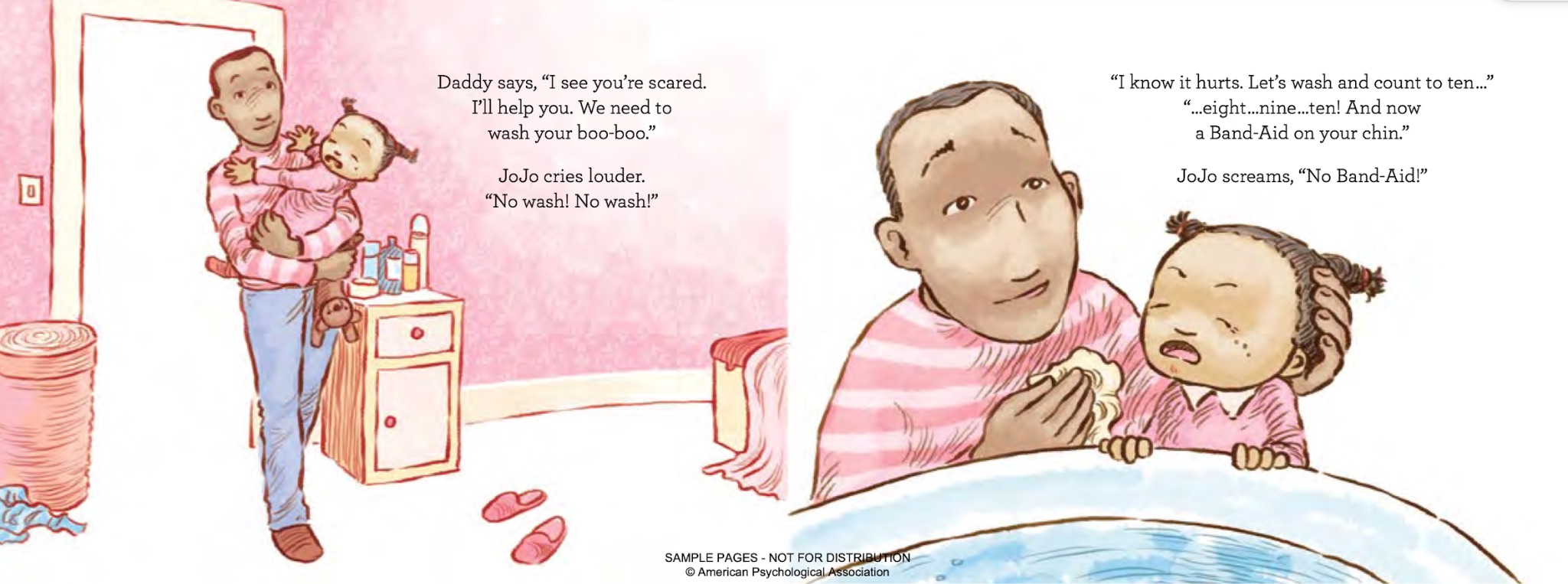
It’s understandable to want to make little of their boo-boo in order to be reassuring, but it’s important not to minimize their feelings in the process. Given how they feel and what they know, their feelings are actually quite reasonable!
The best way you can reassure them is to keep a calm demeanor and expression, even as you validate their big emotions. They’ll be gauging your response to their injury to determine how serious it is and how they ought to feel about it. Your remaining empathetically calm will help them. This can be hard! Not only are you understandably upset that your child is injured and hurting, but you may be worried about the injury itself. Keeping an outward appearance of calm will help your feelings as much as theirs, and will enable you to make good on-the-spot decisions about the situation as well.
But, you gently remind us, how to get that injury cleaned up and bandaged? Thanks for asking!
Distract, distract, distract! The sillier the better, to lighten the tone. In Boo-Boo! JoJo’s daddy lets JoJo put a bandaid on his nose, which makes JoJo – and toddlers “reading” the book – giggle.
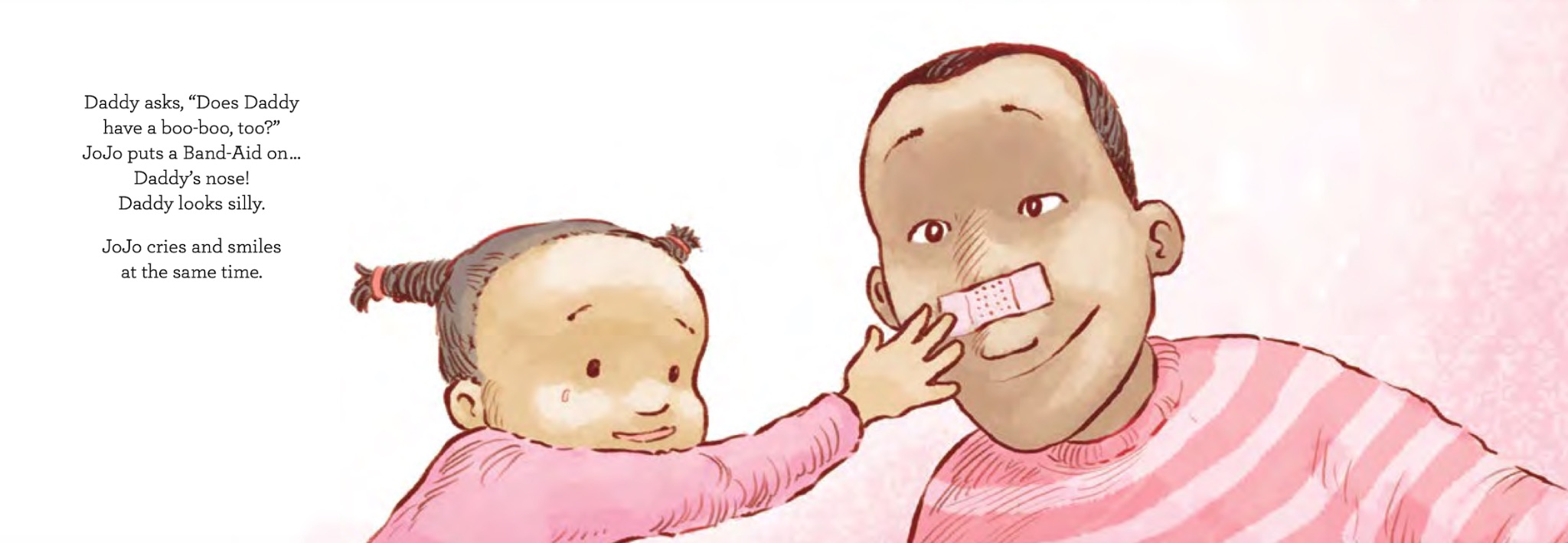
Try to engage as many of their senses as possible – while they’re focusing on those, they’ll be focusing less on the pain they’re feeling. It’s been shown that it even helps to rest a hand on an uninjured part of your toddler — their shoulder, their other knee. The sensation of your hand there draws focus, even subtly, and actually serves to minimize the sensation of pain at the site of the injury. Fascinating, right? Singing familiar songs helps reorient your toddler to happier things. Directing their sight to something they love or something fun will also make it easier for you to address the task at hand with less agita and obstruction from your toddler patient.
Finally, a debrief later on will help pave the way for a smoother process next time. In Boo-Boo! JoJo’s daddy matter-of-factly revisits the incident with her at a later point in time.
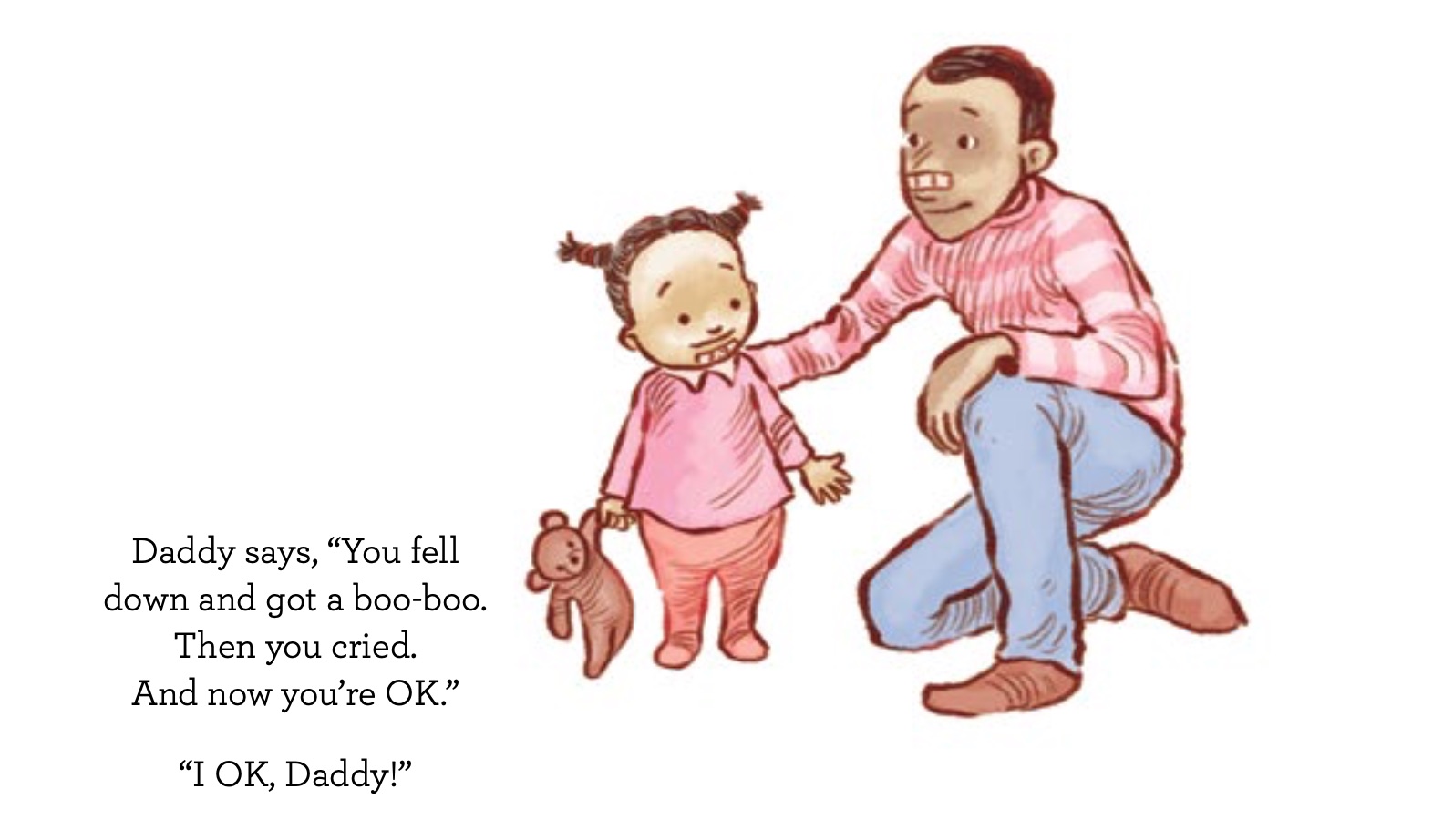
You’d be teaching your toddler so many concepts with this debrief, among them, the passage of time, the fact that boo-boos get better, and the fact that negative emotions pass. Who among us isn’t helped by hearing that last reminder now and again!
More questions about helping your toddler when they get a boo-boo? Feel free to send them to: info@westsiderag.com, and we’ll try to answer as many as we can in an upcoming column.
Read about the authors here, and read the first article in this series — Bye Bye! — here.
